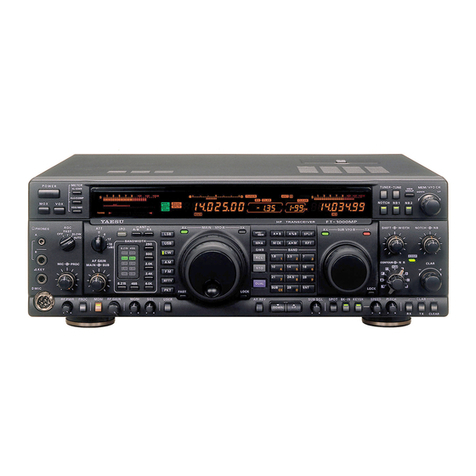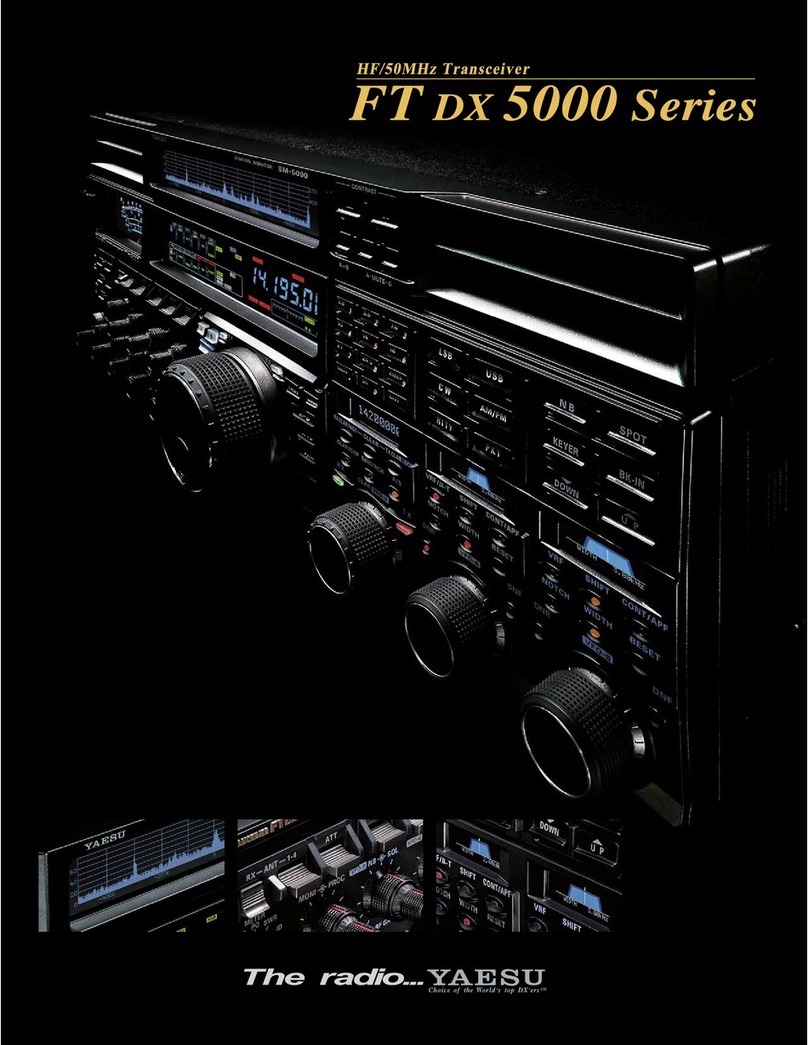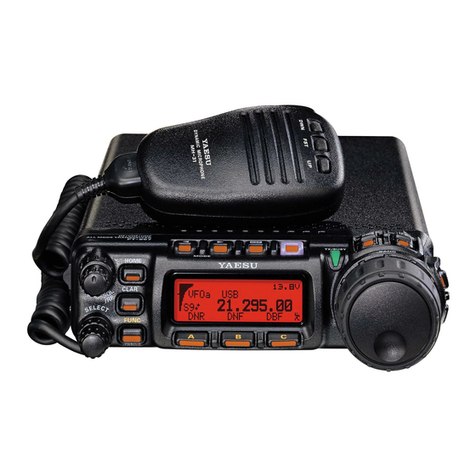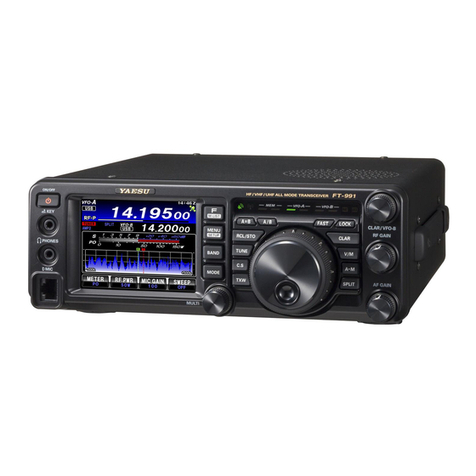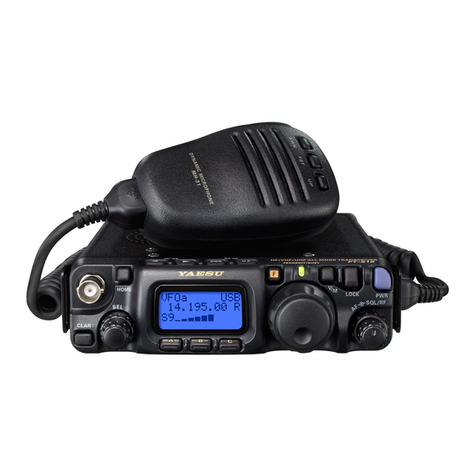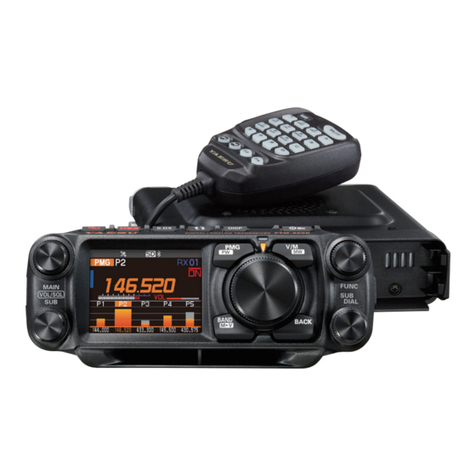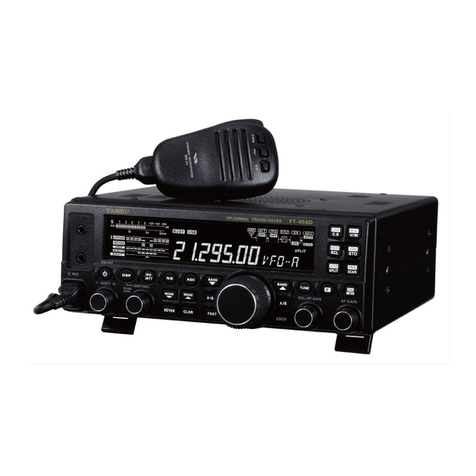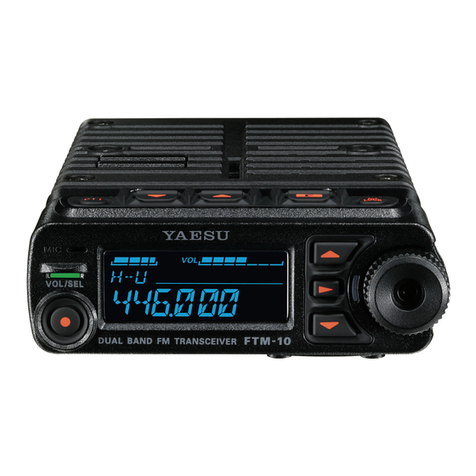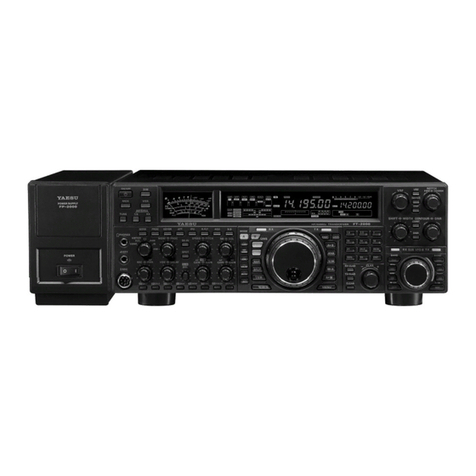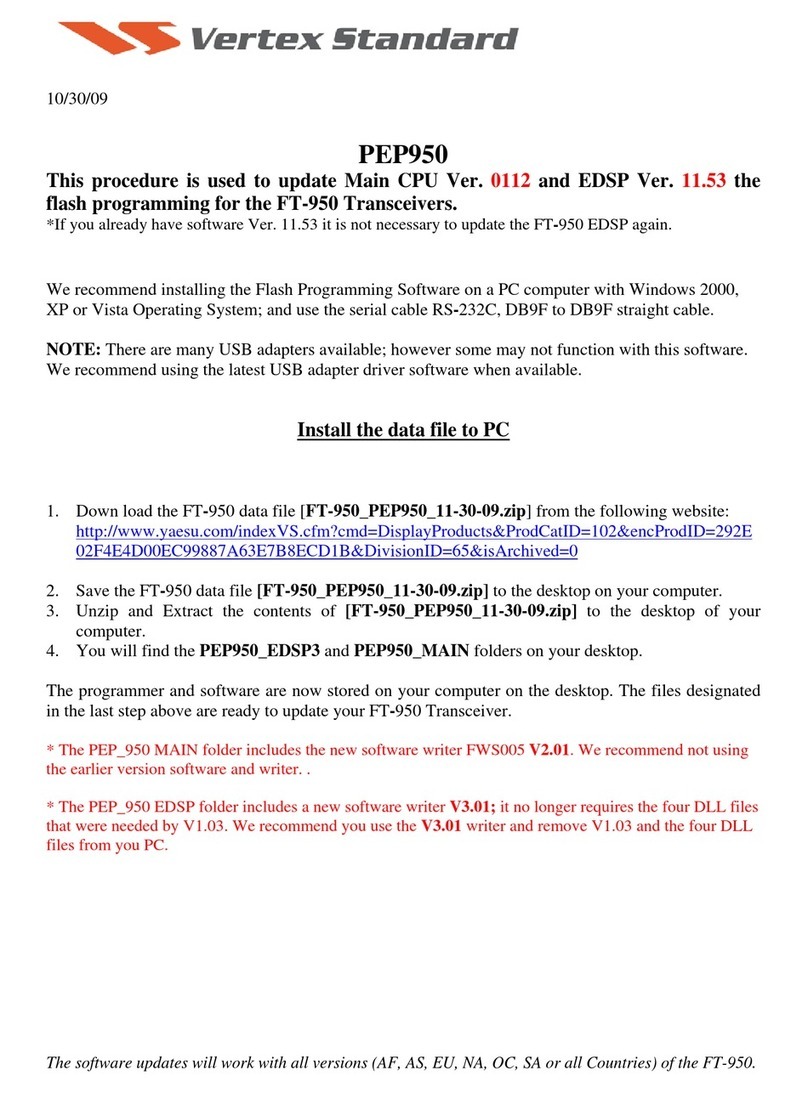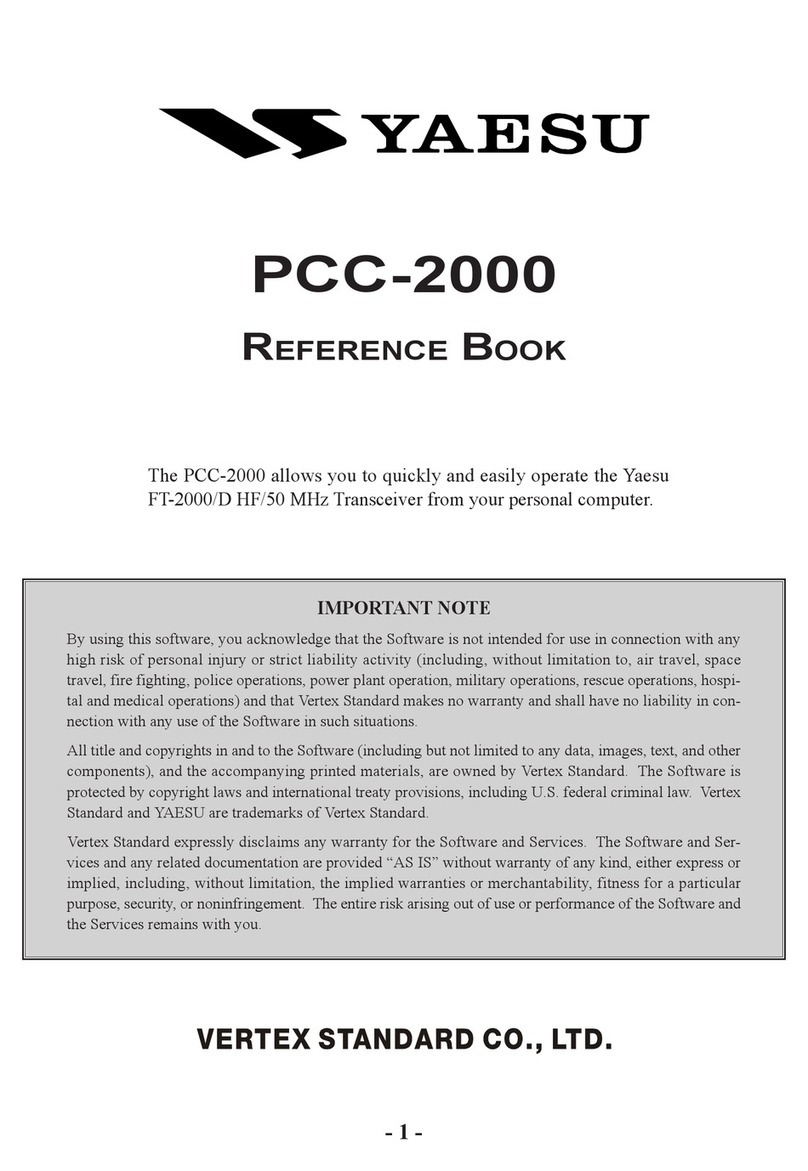
7
Circuit Description
Reception and transmission are switched by “RX” and
“TX” lines from the microprocessor unit (MPU). The re-
ceiver uses double-conversion superheterodyne circuitry,
with a 21.7 MHz 1st IF and 450 kHz 2nd IF. The 1st lo-
cal, produced by a PLL synthesizer, yields the 21.7 MHz
1st IF.
The 2nd local uses a 21.250 MHz (21.7 MHz - 450 kHz)
signal generated by a crystal oscillator. The 2nd mixer
and other circuits use a custom IC to convert and amplify
the 2nd IF, and detect FM to obtain demodulated signals.
During transmit, the PLL synthesizer oscillates at the de-
sired frequency directly, for amplification to obtain RF
power output. During transmit, voice modulation and
CTCSS (or DCS) modulation are applied to this synthe-
sizer. Transceiver functions, such as TX/RX control, PLL
synthesizer settings, and channel programming, are con-
trolled using the MPU.
Receiver
Incoming RF signals from the antenna connector are de-
livered to the RF Unit, and pass through a lowpass filter
(LPF) consisting of coils L303, L305, and L307, capaci-
tors C303, C309, C310, and C316, and antenna switching
diodes D305 and D306 (Both MA111) for delivery to the
receiver front end.
Signals within the frequency range of the transceiver are
then passed through a varactor-tuned bandpass filter con-
sisting of diodes D308, D322, D310 and D323 (all
HVC3508), and coils L334, L335, L320 and L322 and
associated circuitry before RF amplification by Q316
(3SK240).
The amplified RF signal is then bandpass filtered again
by varactor-tuned resonators consisting of diodes D312,
D324, D313 and D325 (all HVC3508), and coils L336,
L337, L325 and L327 and associated circuitry, to ensure
pure in-band input to 1st mixer Q321 (3SK240).
Buffered output from the VCO Unit is amplified by Q318
(2SC5006) and lowpass-filtered by L339, C414, and
C413, to provide a pure 1st local signal between 112.3
and 152.3 MHz, which is delivered to the 1st mixer.
The 21.7 MHz 1st mixer product then passes through dual
monolithic crystal filter F301 (7.5 kHz BW), and is am-
plified by Q327 (2SC4215Y) and delivered to the input
of the FM IF subsystem IC Q334 (TA31136FN).
This IC contains the 2nd mixer, 2nd local oscillator, lim-
iter amplifier, FM detector, noise amplifier, S-meter am-
plifier and squelch gates.
The 2nd local in the IF-IC is produced from crystal X302
(21.250 MHz), and the 1st IF is converted to 450 kHz by
the 2nd mixer and stripped of unwanted components by
ceramic filter F302. After passing through a limiter am-
plifier, the signal is demodulated by the FM detector.
Demodulated receive audio from the IF-IC is amplified
by Q336 (2SA1588Y) and Q338 (UMX2M). After vol-
ume adjustment by the AF power amplifier Q337
(LA4425A), the audio signal is passed to the optional
headphone or 8-ohm loudspeaker.
PLL Synthesizer
The 1st local maintains stability from the PLL synthesiz-
er by using a 21.250 MHz reference signal from crystal
X301. PLL synthesizer IC Q333 (LV2105V) consists of
a prescaler, reference counter, swallow counter, program-
mable counter, a serial data input port to set these counters
based on external data, a phase comparator, and a charge
pump.
The PLL-IC divides the 21.250 MHz reference signal by
4,250 using the reference counter (5.0 kHz comparison
frequency). The VCO output is divided by the prescaler,
swallow counter and programmable counter. These two
signals are compared by the phase comparator and ap-
plied to the charge pump. A voltage proportional to their
phase difference is delivered to the low-pass filter circuit,
then fed back to the VCO as a voltage with phase error,
controlling and stabilizing the oscillating frequency. This
synthesizer also operates as a modulator during transmit.
The RX VCO is comprised of Q323 (2SC5006) and
D314/D326 (Both 1SV282), and oscillates at 21.7 MHz
during receive.
The TX VCO is comprised of Q322 (2SC5006) and
D316/D327 (Both 1SV282) and oscillates at the funda-
mental frequency during transmit, with direct frequency-
modulation using varactor diode D315 (1SV214).
The VCO output passes through buffer amplifier Q320
(2SC5005), and a portion is fed to the PLL IC, and at the
same time is amplified by Q318 (2SC5006) to obtain
stable output. Synthesizer output is fed to the 1st mixer
by diode switch D311 (1SS321) during receive, and to
pri-drive amplifier Q317 (2SC3356) for transmit.
The reference oscillator feeds the PLL synthesizer, and is
composed of crystal X301 (21.250 MHz) and transmit
(DCS) modulation circuit D317 (HVC350B).
The VCO DC supply is regulated by Q330 (2SC4617).
